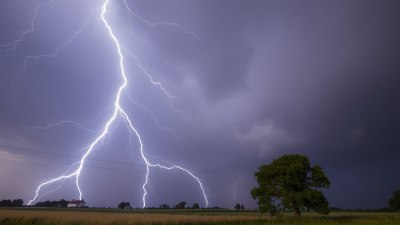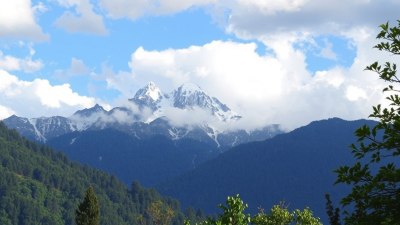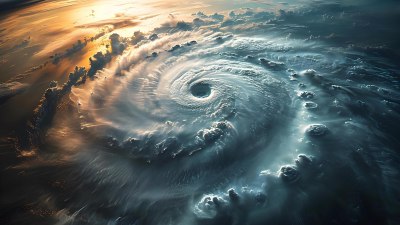How to Predict the Weather Without Technology
Learn timeless techniques to forecast the weather using nature's signs and observations without modern technology.

Image by senivpetro on Freepik
Weather forecasting has never been an exact science, but ancient cultures relied on their observations of nature to predict weather changes. In today's technological age, we often overlook these traditional methods in favor of instant updates from our smartphones. However, the ability to predict the weather without technology can be a valuable skill, especially for outdoor enthusiasts, farmers, and those living in remote areas. In this article, we will explore various signs and techniques that can help you accurately predict the weather using only your senses and nature's cues.
1. Observing the Sky
The first step in predicting the weather without technology is to observe the sky. Different cloud formations can indicate different weather patterns. For instance, if you notice cumulus clouds, these fluffy white clouds usually signify fair weather. However, if they start to develop into towering cumulonimbus clouds, thunderstorms might be approaching. Stratus clouds often bring rain and gray skies, while cirrus clouds can indicate a change in weather is coming, usually in the form of precipitation within a day or two.
2. Understanding Wind Patterns
The direction and strength of the wind can provide insightful clues about incoming weather. A sudden shift in wind direction, particularly from the south, can suggest a warm front, which typically brings rain. Conversely, a wind shift from the north might indicate colder weather. Moreover, strong winds can signify a storm is brewing, so it's essential to pay attention to the changes in wind patterns.
3. The Behavior of Animals
Many animals have an innate ability to sense changes in the environment and can serve as excellent indicators of impending weather changes. For example, birds tend to fly lower to the ground before a storm, while horses may become restless as they sense changes in barometric pressure. Cattle often lie down in fields when they sense rain is coming, and many animals exhibit unusual behavior when a storm is near. Observing wildlife can offer vital clues about the weather.
4. The Smell of the Air
Changes in atmospheric pressure can affect the scents in the air. Before a rainstorm, the temperature often drops, and the moisture increases, contributing to a distinct earthy aroma known as petrichor. If you notice a change in smell, it could be a sign that rain is on the way. Additionally, a heightened smell of decay or dampness often accompanies approaching storms.
5. Measuring Humidity
While you may not have a hydrometer, there are simple ways to gauge humidity levels. When the air feels heavy and damp, your surroundings may be experiencing high humidity, a precursor to rain. Additionally, if the leaves on trees appear dewy in the morning, it suggests that humidity is high, and rain may be forthcoming. In contrast, when the air feels crisp and dry, it often indicates fair weather.
6. Observing the Moon
The moon can also provide helpful hints for weather prediction. A halo around the moon indicates high cirrus clouds, which often precede rain. Furthermore, some believe that the moon’s phase can influence weather patterns, with a waxing moon often leading to rainy weather and a waning moon bringing drier conditions. Hence, noting lunar phases can help in predicting short-term weather changes.
7. Utilizing Nature’s Calendar
Paying attention to seasonal changes in flora and fauna can guide predictions. For example, certain flowers bloom when temperatures rise, and tree buds open when warm weather approaches. Likewise, some plants may wilt or turn droopy when rain is on the horizon. Likewise, migratory patterns in birds shift based on seasonal changes, and monitoring these patterns can be indicative of upcoming weather, especially if an unusually early or late migration is observed.
8. The Role of Barometric Pressure
A drop in barometric pressure often signals that a storm is coming. While you may not have access to a barometer, you can often feel a difference in the air pressure. Your ears may pop, similar to being in an airplane, especially during sudden drops in pressure, indicating changing weather. Additionally, if you feel headaches or general discomfort, it may coincide with a change in weather, typically predicting rain or storms.
9. Learning Local Patterns
Every region has its own set of weather patterns, shaped by geography, climate, and local historical data. By observing and recording these patterns over time, you can hone your ability to forecast the weather accurately. For example, locations near large bodies of water often experience more stable weather, while mountainous areas may have unexpected weather patterns. Engaging with local meteorological history can also provide context for current observations.
10. Collecting Your Own Data
To enhance your weather prediction skills, consider keeping a weather journal. Documenting daily weather patterns, including temperature, precipitation, and cloud formations, will help you identify trends and improve predictions over time. This practice not only increases your observational skills but also builds a personal reference for predicting future weather. This systematic approach will also reaffirm the connection between natural signals and weather changes.
11. Staying Curious and Observant
Lastly, to be effective at predicting the weather without technology, it is crucial to cultivate a sense of curiosity and observation. Spend time outdoors, observe your surroundings, and engage with nature. Your predictions will be more accurate when you have a heightened awareness of the changes around you. Additionally, exploring the habits and signs of local wildlife will give you further insights into upcoming weather trends.
Predicting the weather without technology is an invaluable skill that connects us with nature. By observing the sky, wind patterns, animal behavior, and other natural indicators, we can make informed predictions about changing weather conditions. Although modern conveniences make it easy to rely on technology, turning back to these timeless techniques can enhance our understanding of the world around us. By honing our observational skills and documenting local patterns, we can engage with the environment and gain a deeper appreciation for the natural rhythms that govern our planet. Whether you're planning a picnic or planting a field of crops, being attuned to the signs of nature will always serve you well in navigating the weather.











